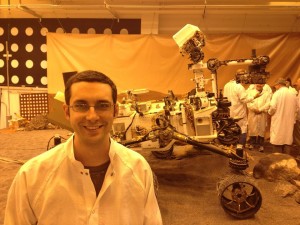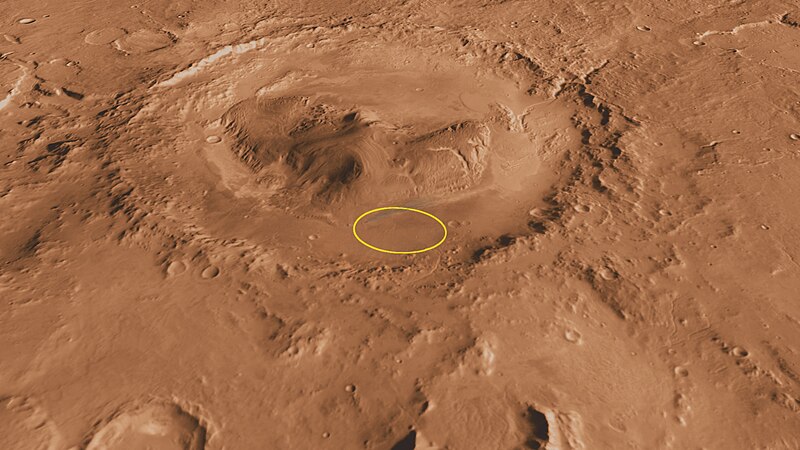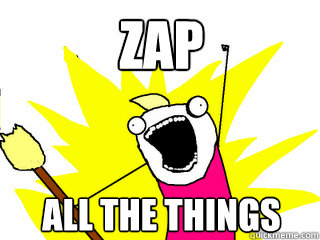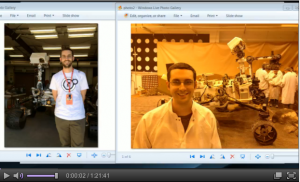Well, this was unexpected. I was mentioned on Gamespot in an article about Bungie viewing NASA as a ‘constant source of inspiration’…
Author Archives: craig
“Traveler be praised”
I figured I would try my hand at some Destiny fan fiction.
My story, “Stellar Conjunction”, was published over at destiny.bungie.org today!
Guardian Radio
I’ve joined the fantastic crew over at Guardians of Destiny and will now be on their weekly podcast about all things related to Bungie’s next game Destiny. I’ve also contributed a few blog posts, mirroring many of the thoughts I’ve expressed here.
Bungie
I had the honor and privilege to visit Bungie Studios in mid-January. I gave a presentation over some of the initial results from MSL and got to meet some of the great people who are making their next game. I presented them with a large Mastcam mosaic, taken from Curiosity’s current location (Yellowknife Bay) on Mars. Here is a picture of how crazy excited I was….

KerbalKon 2012!!
If you haven’t played Kerbal (<—- download it here), do it! It’s amazing.

Prepare for launch!
It’s fun, it’s funny, and it has a fantastic solar system of planets and moons that you can explore. Spacecraft motion and orbits are governed by the laws of physics, so it’s like a simulator, but it’s not so much of a simulator that it isn’t fun. It’s really fun. It’s even fun to blow up immediately off the launchpad. Have I mentioned it’s fun?

You’re in freaking orbit!!!!
Of course, to get there you have to build your launch vehicle and a lander and successfully pilot it from the launchpad to the surface of another world.

Land your awesome spacecraft on another planet… now let’s find some gas and minerals! Amazeballs!
With the latest update (0.18) you can now explore the solar system using scientific instruments that map the surfaces of moons and planets and tell you how much gas is available to be mined. Later down the road, planets and moons in Kerbal will have cloud layers that require you to use scientific instruments to survey their surfaces before you send your poor little Kerbals down to the surface. It’s really a fun game and anything I would write wouldn’t do it justice, so please just go play it!
I was honored to be asked to speak about my experience on MSL and Curiosity during the LiveStream even for KerbalKon 2012!
I haven’t been able to find a link to the full interview, but I did find a clip.
It was so great to speak with everyone, and I hope I can talk to all the Kerbal fans and the developers again soon. Aside from all the enthusiasm from the fans and devs, I was really really excited that the devs were so excited about using Kerbal to teach people about science and engineering. This is exactly why I started this blog, and brought together Astrum Terra! I hope that we all can work together to bring science and video games together and it’s already happening in Kerbal!
Right before I had to leave the LiveStream, I was told that “Craig Kerbal” would be making an appearance in Kerbal. It will be so much fun to blow myself up from the launchpad, or successfully strand myself on the surface of another world!
Game Design Faculty Position
If you are a game designer with at least a Masters degree and you love teaching here’s an awesome opportunity for you. Nothing beats making games AND having tenure ![]()
Title: Assistant Professor of Game Design
Location: University of Wisconsin – Stout
Job summary: Seeking a Game Designer with a focus in digital video game design. Secondary focus in traditional (tabletop) game design and other digital design foundation areas is welcomed.
Apply! http://chronicle.com/jobs/0000758030-01
NASA scientist finally sees The Matrix… tries to prove we’re in a video game?
A genuine NASA scientist, Rich Terrile, thinks we’re living in a video game.
One NASA Scientist’s Quest To Prove We’re All Trapped Inside A Video Game
He actually says that the real world behaves the same way as Grand Theft Auto, at least on a quantum mechanical level, where what you need to experience only loads-in when you need it. He’s got an interesting point, but I think the hypothesis is going to be really tough to prove. Furthermore:
‘Terrile supports his theory by pointing out “the observable pixelation of the tiniest matter and the eerie similarities between quantum mechanics, the mathematical rules that govern our universe, and the creation of video game environments.’
It’s a really cool idea, but just a word of caution… claiming the real world is just like GTA is probably not the best comparison.

A Diversion: Mystical Piano Journey to Mars
Warning: This post has nothing to do with video games, but maybe a little teeny bit to do with science…
I like to play the keyboard in my spare time, and when you’re living on Mars time you do get some days off. So yesterday I decided to write some music and came up with a piano piece that tries to mimic the stages of Curiosity’s journey to Mars, from launch to escape from Earth’s orbit, to transit, and finally entry, descent and landing on Mars. Perhaps it’s too abstract and a little hastily thrown together… doesn’t matter, it was a fun and relaxing way to spend part of my day off.
It was all done in one take, with some post-processing and effects thrown in at the end… mostly to add some electronic elements for when Curiosity finally arrives at the red planet and phones home.
[m4a] Curiosity.m4a , [mp3] Curiosity.mp3
PS: you can hear lots of my (much more carefully produced) music over at www.themarathonmusic.com
Mars Game Laboratory
There is now a video game where you can drive a rover around Mars! Other than exploring, which is awesome because the game uses real high-resolution imagery and topography data from Mars, there currently isn’t much to do. I want to change that and that’s what I’m talking about today. First, though, check the game out here.
Sometimes… maybe all the time, what makes a video game fun isn’t having unlimited power and resources, but having a limited amount of resources to accomplish your goal. In pretty much any game, and in real life, you have to work within a set of constraints… unless you’ve reached the “using money as a household rag” stage. I recently moved across the country to start a new job as a scientist working on the next Mars rover and so far I’ve found that not only is Mars exploration fun, but it can help to think like a gamer.

I’m standing in front of the new Xbox 720 prototype…. not really. Actually, that’s the Mars Science Laboratory testbed rover at the Jet Propulsion Laboratory in Pasadena, CA
The rover is called the Mars Science Laboratory and on August 5th, 2012 it will land in a big crater on Mars. The crater is named Gale, and in that crater there’s a mountain of layered rocks over 5 kilometers (18,000 feet) tall. Near the base geologists think the deposits are somewhere around 2 billion years old. These rocks formed a very long time ago when we know that Mars was a much different, and much more wet place, so we’re hoping to find some really interesting clues about what Mars was like when there was generally much more water around.

Gale crater, Mars. The rover will land somewhere in that yellow oval.
In the real-life game of exploring Mars, your own Mars Science Laboratory rover is the size of small car (think Mini-Cooper) loaded with a variety of scientific instruments that each tell you something different about the surrounding rocks and environment. Some of these instruments are mounted to the rover’s body and others can be deployed on an arm for up-close analysis. One of them, called the Alpha-Proton X-Ray Spectrometer or APXS, can tell you how much of a given element is in a rock. Very useful information! But you do have some trade-offs to consider… the instrument needs to be placed very close (not more than a few centimeters) to the sample. In order to move APXS into position you have to move the whole robotic arm, which weighs around 90 kg, so moving it takes a significant amount of power. APXS also requires a relatively large amount of time, several hours, to acquire enough statistical information to make meaningful conclusions about the abundances of the elements that are detected. But what it lacks in speed, it more than makes up for in the wealth of information gained about the elemental chemistry of the rocks and, as a bonus, the data can be stored in a relatively simple text file which can be transmitted back to Earth rapidly. So you’ll have to consider when to deploy and use the APXS strategically, as the science return can be great but it might take a significant amount of time and power. By contrast, another instrument called Dynamic Albedo of Neutrons (or DAN) can, within a matter on minutes, tell you the abundance of just one element, hydrogen. This instrument does not need to be deployed on the arm and its power usage is minimal. The data produced by DAN is also small, and similar to APXS, the data can be stored in text files. The advantage of DAN is that it can be used to accurately determine the abundance of hydrogen using very little power and data storage, but unlike APXS you are only getting information about hydrogen and not nearly the entire periodic table.

In video games and science, when in doubt, just blast everything with high powered lasers
OK, but say you don’t care about the composition of the rocks (what are you, some sort of physicist?) … well, your rover also has a variety of high resolution digital cameras, two on a mast that serve as the rover’s eyes and another mounted to the arm for close-up images. The cameras require relatively little power to focus and snap a picture, and the scientific return from the images can be invaluable… but what about the size of the data for all those pictures? If you want a full-size image to come back to Earth it could be around 2 Megabytes, which doesn’t sound like much but when you’re talking about getting that data back from Mars, along with all the required engineering and telemetry data, those images can add up. So you can scale-down the images and send back a lot of them each day, but the resolution may not be sufficient to get much scientific information. In order to accomplish your science goals, you have to choose carefully what full-size images get sent back to Earth. There are a bunch of other cool instruments on your rover and… I’m not even joking, one of them shoots laser beams! But rest assured, each instrument tells you something different about Mars, has it’s own set of power requirements, generates different amounts of data, and will take different amounts of time to operate.

“Should we fire the mass acceleration cannon, Jim?” “No, let’s do some sweet jumps first.” If only planetary exploration was really like driving the rover in Mass Effect…
Now lets get back to games. Games don’t teach us how to interpret geologic information returned from a Mars rover, and they don’t teach us how scientific instruments like APXS or DAN work, but if Mars exploration were a video game those wouldn’t be the “playable” parts of the game anyway. In this fictional game, interpreting the geologic history of Mars (or the history of ancient alien civilizations on Mars – whatever floats your boat) is the game’s story, it’s why you play, and you’d let the writers of the game dictate how that played out. The inner workings of how your scientific instruments work? Well, that’d be like asking how the assault rifle in Halo works or how pylons generate energy for the Protoss in Starcraft. Yes, it’s part of the game world, and it’s probably explained in one of the novels based on the game for players who are interested but it’s not central to much. What is central to the assault rifle in Halo or pylons in Starcraft? The answer is… what do they do? And in a game about Mars exploration, the answer is the same. What do your scientific instruments do? For the purposes of a game, gamers don’t care how these instruments (or guns) work, the important thing is what they do and in what situation one is preferable to another. Too often, video games that try to incorporate science get this very important part incorrect. They incorporate science at this level of detail, giving you explanations about the details of story components or explaining how details regarding your armor or weapons rely on scientific principles. While this method of incorporating science is commendable, it doesn’t engage the player or give them the feeling of really understanding. In a way, the science stays above the player, and talks down to them a bit. What I’m proposing is we give the scientific instruments and principles to the player, bring it to the level of actually using them while playing, and they’ll start to get comfortable with it. Even if you take some liberties to make it “fun”, it’ll go a long way to making people feel more comfortable with real science.

How does this pylon work? I don’t care, but it helps me obliterate hoards of zerg.
So in the game of Mars exploration, the fun is in how you do the exploring, what instruments you use, how you use them, and how you manage your resources. On top of this is a compelling story, graphics, and detailed background about the individual game elements. Playing the game would involve managing to discover new, amazing things on Mars under all the constraints you’ve been given. And as you can see, the constraints can be numerous, highly variable and (I think) fun! What’s especially fun is that there are multiple ways to solve problems. In the absence of any oversight whatsoever, you could accomplish the goals of Mars exploration by simply ignoring the constraints. Drill every rock! Take every picture!

You might be successful using this method but it will take you longer, you might wind up doing more than was necessary, you’ll use way more power, and if you use up too much time and resources, something unexpected might happen which may keep you from accomplishing your long term goal. There’s something fulfilling and fun about finding a more elegant solution to the problem. Gamers do this all the time, working with constraints and finding numerous, fun ways to play.
So with all this in mind, let’s get back to the Mars rover. There is one more “fun” constraint you have to work with. Consider that the seemingly simple act of getting data back from the rover is, in itself, determined by a process with it’s own set of advantages and limitations. We (humans) have several satellites in orbit around Mars, and we typically use one of them as a data relay between Earth and Mars for communication to the rover. This is great because it means we don’t have to store the data on the rover and we gain the ability to transmit relatively large quantities of data back to Earth. But, the limitation is that the satellite only passes over Gale crater twice a day, so all of the sending and receiving of data needs to be done during those two passes of the satellite over the rover’s landing site. And for added fun, you can only transmit so much data before the satellite passes over the horizon and you have to wait for the next pass… so you have to prioritize what comes down first, and if you don’t do it right, you might wind up sitting on Mars for an extra day without that critical piece of information you needed in order to move on. So effectively, you’re on the clock every day to make a science plan, command the rover to take the actions that complete the plan, wait for the rover to execute it, and then to evaluate the data that came back and start all over again. Go ahead and wrap all of these time constraints in another time constraint, which is that the rover itself, mechanically, has a limited lifetime.

Gamers are pretty familiar with managing a variety of resources… in this screenshot from World of Warcraft the bottom of the screen lists all the spells and abilities available, on the right side of the screen are all the quests the player is on, as for what’s on the left, who knows… it’s probably reminders to get up and eat a Hot Pocket every 7 hours
I described all of that stuff not only because I think it’s cool, but because it’s interesting to me that in Mars exploration and in games there are trade-offs. Engineers, who are probably facepalming, deal with trade-offs all the time. (Scientists… yeah, we’re aware of these things called trade-offs but they’re super inconvenient) Gamers, too, make choices about trade-offs in many strategy-based video games like Civilization and Starcraft. Role playing games like Star Wars: Knights of the Old Republic, World of Warcraft and Mass Effect also require a player to manage a variety of resources which have trade-offs. I’d also wager that a game set on Mars, focused on exploration with an intriguing story line would get the attention of a lot of gamers. And hey, I’m only partly kidding here… but what would work really well, and be cool, would be to implement this idea into a first-person shooter. Instead of shooting a gun, you have an infrared spectrometer, thermal imager, an APXS and a neutron detector… and, well sure, you can have a gun too. The closest we’ve come to this has been with a Portal gun, but there’s no reason why a bit more realistic of a scientific basis can’t be just as much fun as portal-based science.
—–
Update: Check this out! I had nothing to do with this whatsoever, but I’m really glad to see this type of thing on Xbox Live.
Through the Rabbit Hole…
Craig Hardgrove

The sweet smell of freshly acquired achievements….
Oh, that sweet “BLEWP!” you hear when you get an achievement in an Xbox game. It’s so satisfying… it almost feels like you’ve, well, achieved something. What if you could hear that same noise and get that same sense of satisfaction from doing more mundane, real life tasks like doing your laundry, or walking to the train station? What if you could also do those things while having teenagers yell out obscenities about your Mom and talk about how much better they are at doing their laundry than you?? OK, that wouldn’t be as cool.
Anyway, this past week, I’ve been thinking a lot about Jane McGonigal’s ideas regarding games and reality. She wrote a book called Reality is Broken about this subject. At first I was skeptical of her ideas on making our own world more like the video game world, but after reading her essays and listening to her speak I find myself nodding my head and agreeing wholeheartedly. Jane’s work lies firmly in the realm of “Alternate Reality Games” (ARGs), which I’d highly recommend playing if you’ve never been a part of or experienced one. I was sucked in one through the rabbit hole left in an official Halo 2 trailer, that briefly flashed a link to www.ilovebees.com. It was my familiarity with the Halo universe that kept me playing, which mostly meant that I checked the forums at unfiction constantly, at least in the initial phases of the game. As the game progressed, however, pay phones started ringing across the country… and the people playing the game had to answer them. I’d never been so excited to go out and find a pay phone!
What came through the phone were snippits of an amazing story that, unknown to the players at the beginning, was actually a mini-prequel to the events of Halo 2. It was fantastic, it was mysterious, and at some point when the final moments of the audio-drama unfolded due to the actions of thousands of players around the country, I think I may have shed a small tear. I was so moved by the experience that I decided to drive to an end-of-game event that took place in Chicago (I lived in Knoxville, TN at the time). Looking back on it, I’ve never had a life experience as unique as playing I Love Bees. I Love Bees certainly wasn’t without its flaws, various payphones didn’t ring and sometimes things got a little cheesy… but the coolest part about I Love Bees, for me, was that it opened up the possibility of bringing the world of video games into the real world, and it made me want to do things I would never have done outside of the context of the ARG.
So where’s the science? I’m happy to report that people are working on it! In fact, some of them quite well. MIT has a group devoted to bringing science to ARGs. Their recent game, called Vanished, was hugely successful, attracting 6,700 registered players who learned about artificial intelligence and actually went out into the world to collect real scientific data on temperatures. Vanished targeted children, however, there is no reason not to include adults in these types of games. In one such game that targeted adults and children alike, called “World Without Oil”, players were required to behave like they lived in a world that had completely run out of oil. Among other amazing things, the game actually resulted in players figuring out how to make their cars run on biofuel. This wasn’t just in the game world though, they actually made their real cars run on biofuel… all because of the game. Thats amazing. So that got me thinking, what else might be possible for players of an ARG?
Start with an ARG where people create things to progress the game. They can learn all sorts of things in this process, just as I’m sure the players who modified their cars to run on biofuel did. What if, at first, the game required players to build small circuits to unlock something on the web or to further the game’s story? Then the game could require other players to write computer programs. Then the game would require that the programs would have to talk to each other, and once successful, more of the game’s content opened up…. What if, closer to the end of the game, the game asked people to build a weather balloon or a model rocket? What if it asked them to take pictures from their balloon or rocket? Then, using all the systems the players have built, the end of the game asked the players to launch multiple balloons from different parts of the country. The balloons will need to communicate with one another while they were at high altitude, using the electronics communication equipment and computer programs players built earlier in the game… What do you have at that point? You have a home-brewed Earth-orbiting telecommunications system. You have people that know a lot more about how to launch things into near low-Earth orbit, as well as about engineering and science. You might, I dare say, have paved the way to the future of private space exploration.
Is this too much? I don’t think so… the power of online communities is immense. And small non-profit groups are already sending weather balloons to very high altitudes and acquiring video. Check this out…
The video above was made by the Brooklyn Space Program, a small group in NY. I say we make an ARG that harnesses the power of groups like these, and combines their talents with the talents of groups throughout the world in computer programming, electronics and science. Under the auspices of a game, people will be inspired to do truly revolutionary things. ARGs could potentially change the world. And if you include real science and real scientific projects in games like ARGs, you have the power to educate as well as inspire.
PS: Probably no updates for the rest of March. I’m going to Moscow, just in time for the “re-election” of Putin. I’ve heard that the Russian people are not exactly thrilled with this, so wish me luck. And please, anyone reading this who is interested in collaboration on an ARG I’d love to hear from you.



